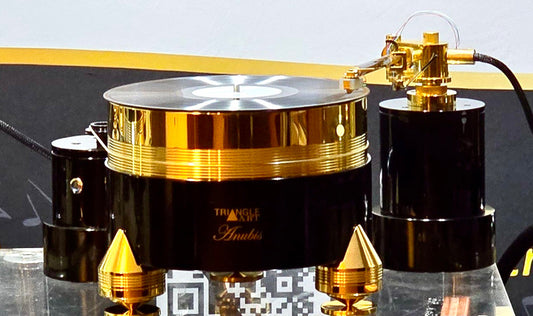Writing about music is like dancing about architecture.
Well, it’s hard to write about a lot of things. Sometimes we have to invent new language, but mostly we make old language learn new tricks—thus the wine-critic words employed by so many writers. Some do it well, others struggle.
So I sympathized with Marc-André Hamelin, a fine pianist, when he tried to describe music he had recently recorded, Morton Feldman’s For Bunita Marcus (Hyperion CDA68048). Here’s how he began:
You are about to enter a world unlike any other. A universe of sound completely unrelated to the narrative, linear musical physiognomies we are all used to. With For Bunita Marcus Feldman has managed to wipe the slate clean and invent a world which has its own laws, which must be dealt with in its own terms.
Okay. Suppose you had never heard this music. Would these words make you eager to experience it? Not necessarily, I’m thinking. His next words were more useful:
It is also a domain of extreme economy of means, both in its radically reduced dynamics and in its uncommon textural sparseness. . . . There are so many dimensions within this seemingly limited material that it is entirely possible for the listener to understand the music in many different ways, and also to be affected by it in different ways.
Good. With that he said something fully accurate and not completely off-putting. I happen to believe For Bunita Marcus is one of the two or three most beautiful solo piano works ever created, in spite of its being (to quote Hamelin again) “a 72-minute stretch of delicate, triple-piano textures with the damper pedal held constantly down.” Delicate indeed: you’ll seldom hear more than one or two notes sounding at any given moment. And those notes usually take their own sweet time.
My advice is, get it right away. Try to ignore what Hamelin and others have said about it. Push “play,” sit down, and be quiet. For Bunita Marcus is not difficult to follow, understand, or enjoy. It simply lays bare the choices every composer has faced since the beginning of time: what do I do first? Then what? And so forth.
You can hear it as a set of continuously developing variations, the sort that Brahms wrote and upon which Schoenberg theorized. You can hear it as a narrative, although that’s not required. In any case you’re unlikely to imagine the adventure story assumed in so many Romantic symphonies.
You might hear something like this, though: made lazy by afternoon sunlight, a cat plays absent-mindedly with a ball of yarn, distracted by motes of dust, or by sounds from another part of the house, or by memories of a mouse he almost caught, once. (Hm. Sounds like the program for L’après-midi d’un faune.) Here’s another scenario: you’re alone, outside, on a neighborhood basketball court. It’s a cool fall day. You shoot baskets. Some go in, some don’t. A car goes by.
Hamelin recommends that you listen “at a much lower level than usual.” Feel free to ignore that too. In summary: dry, but subtly savory. (The piano is well recorded.)
Now for the juicy part. Really, is there anything juicier than Morten Lindberg’s productions for 2L? It almost doesn’t matter what he takes on. You know it’s going to sound delicious. Here we have Interactions (2L-137-SABD; Blu-ray Pure Audio + SACD), three works for violin and piano recorded in the Sofienberg Church, Norway, a typical high-ceilinged Lindberg haunt, full of old wood, old stone, old plaster, and, for this recording, various utterly-new technologies.
You’ll never hear solo violin (here a 1906 Enrico Rocca) this juicy anywhere else. It’s solid, present, fully hydrated. Even in the most robust passages, the piano doesn’t swamp it; that’s an implicit tribute to Lindberg and recording technician Beatrice Johannessen. They’re not merely competent, they’re alchemists.
Of course, it does matter what is being recorded. Violinist Bård Monsen and pianist Gunnar Flagstad lead off with an early sonata by Fartein Valen (1887–1952), pioneering Norwegian composer who, after a period of considerable struggle, overcame the prevailing romantic nationalism of the day. It’s very much his own music, but what music! I once worked with a student who—mostly at the urging of her piano teacher—wrote her senior thesis on one of Valen’s piano sonatas. So I thought I knew Valen, but that scarcely prepared me for the passionate, tender, brash, stormy, powerful, sweet, achingly sincere music that spills out here, expertly channeled by Monsen and Flagstad. Wow.
Double wow for their treatment of Igor Stravinsky’s Duo Concertante, a 1931 one-off written for violinist Samuel Dushkin so that he and Stravinsky could fill out a duo-recital program. The music is stuffed with neoclassical rhythmic verve—a Stravinsky fingerprint—but seasoned with just enough lyricism to soften its rigor. With the Duo Concertante, as with Valen’s sonata, achieving proper balance between violin and piano can be difficult. The first movement, for example, contains long passages in which the violinist must project sustained double-stops against the pianist’s hyperactive, staccato figuration. Which is “accompaniment” and which “melody”? Each is important, each must contribute to the texture. Listen:
Responsibility for good balance falls largely on the musicians, but they need great engineers to capture their effort. The 2L team handle it without a hitch. Interactions closes with Witold Lutosławski’s Partita for Violin and Piano, written in 1984 for Pinchas Zukerman and Marc Neikrug. In Monsen’s and Flagstad’s hands it becomes a perfect way to round out the collection. Like the Valen and Stravinsky works, it gets a fully juicy rendition from everyone involved. In fact, this bottle truly balances the crisp with the buttery, but in a good way. It’s bright, yet opulent; you can drink it today or cellar it for a few years.
Heh heh. Hope you’ll give the actual music a try. Words may fail you.



